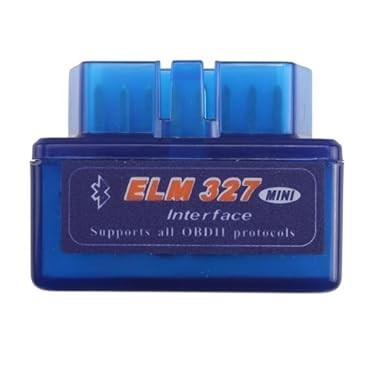Keeping a close watch on your engine’s temperature is crucial, especially if you’re pushing your vehicle’s limits in motorsports or even just want to ensure its longevity. Overheating can lead to serious damage, and catching temperature spikes early can save you from costly repairs. For modern cars equipped with OBD2 ports, monitoring coolant temperature has become significantly easier and more affordable thanks to Obd2 Temp Gauges. If you’re looking for a budget-friendly way to monitor your car’s temperature without the hassle of installing traditional gauges and sensors, you’re in the right place. Let’s explore some cheap OBD2 temp gauge options that can help you keep your cool, without burning a hole in your wallet.
For many car enthusiasts and DIYers, the idea of adding extra gauges can be daunting, involving complex wiring and sensor installations. However, OBD2 temp gauges offer a plug-and-play solution. These devices tap into your car’s existing On-Board Diagnostics II (OBD2) port, allowing you to read real-time data, including coolant temperature, directly from your car’s computer. This eliminates the need for additional sensors and complicated plumbing, making it a perfect solution for those seeking simplicity and affordability.
One of the options discussed in online car communities, like the Grassroots Motorsports forum, revolves around dedicated OBD2 gauge devices. The ScanGaugeE and UltraGauge are often mentioned as compact units that plug directly into the OBD2 port and display various parameters, including coolant temperature.
These devices, while slightly pricier than other alternatives, offer the advantage of being self-contained and robust. The ScanGaugeE, for example, is known for its durability and ease of use, making it a reliable option for those who need a dedicated, always-on display for temperature monitoring. Its compact size is also a plus, allowing for discreet mounting without cluttering your dashboard. However, the cost, around $95 for a ScanGaugeE, might be a concern for those on a tight budget. The UltraGauge, while potentially cheaper, raises concerns about its mounting security, especially in demanding environments like rallycross, where vibrations and bumps are common.
Fortunately, for those seeking the absolute cheapest OBD2 temp gauge solution, the combination of a Bluetooth OBD2 adapter and a smartphone app presents a compelling alternative. These adapters, readily available online for as little as $12, plug into your OBD2 port and wirelessly transmit data to your smartphone via Bluetooth.
 Bluetooth OBD2 adapter example
Bluetooth OBD2 adapter example
Apps like Torque (for Android) and others can then display this data in a customizable gauge format on your phone screen. This setup effectively turns your smartphone into a comprehensive OBD2 gauge cluster, capable of displaying not only coolant temperature but also a wide range of other engine parameters. The beauty of this approach lies in its cost-effectiveness and versatility. If you have an old smartphone lying around, you can repurpose it as a dedicated OBD2 display, further minimizing the cost. Mounting solutions for your phone can range from simple suction cup mounts to more robust spring-loaded holders with Velcro straps for added security, especially important for off-road or racing conditions.
The forum discussions highlight the practicality of using an old Android phone for this purpose. Since the phone doesn’t need cellular service to function as a gauge display, any compatible Android device will work. This makes it easy to create a semi-permanent, affordable OBD2 temp gauge setup in your car. However, it’s worth considering the potential for theft if a smartphone is left visibly mounted in your car. A dedicated device like ScanGauge might be less attractive to thieves.
While dedicated gauges and smartphone-based solutions are the most common OBD2 temp gauge options, some forum members also suggested even more budget-conscious DIY approaches. One user mentioned using a multimeter with a temperature sensor taped to the radiator hose as a temporary solution. While not as elegant or precise as OBD2-based gauges, this illustrates the lengths to which car enthusiasts go to monitor engine temperature on a budget. Another suggestion involved in-line adapters for coolant hoses to install traditional temperature sensors, which might be suitable for older cars or those wanting a more classic gauge look, but this approach requires more involved installation than OBD2 solutions.
Ultimately, the best “cheap OBD2 temp gauge” for you depends on your specific needs and priorities. If you value simplicity, robustness, and a compact dedicated display, a ScanGaugeE or similar device might be worth the investment. If you’re looking for the absolute lowest cost option and are comfortable using your smartphone as a display, a Bluetooth OBD2 adapter and a compatible app offer an unbeatable value. And for those truly embracing the DIY spirit, even more rudimentary methods can provide temperature monitoring in a pinch. No matter which path you choose, keeping an eye on your engine temperature is a smart move for any car owner, and OBD2 technology has made it more accessible and affordable than ever before.